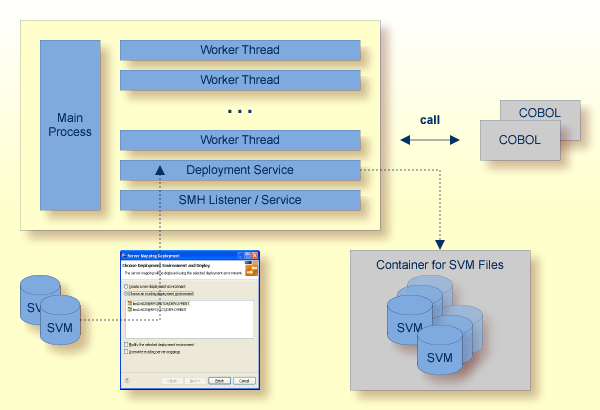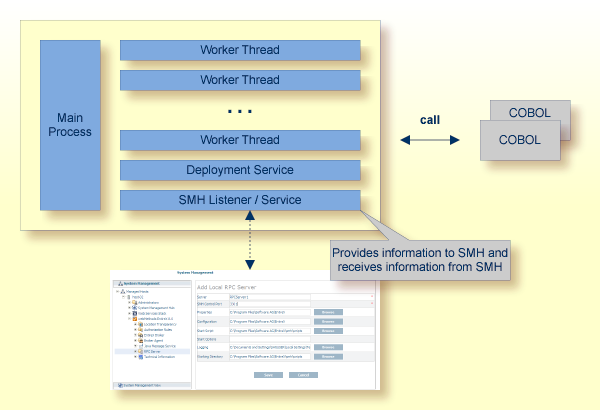The EntireX z/VSE Batch RPC Server allows standard RPC clients to communicate with RPC servers on the operating system z/VSE under Batch. It supports the programming language COBOL and works together with the COBOL Wrapper and IDL Extractor for COBOL. This document covers the following topics:

RPC requests are worked off inside the RPC server in worker threads, which are controlled by a main thread. Every RPC request occupies during its processing a worker thread. If you are using RPC conversations, each RPC conversation requires its own thread during the lifetime of the conversation. The Batch RPC Server provides two worker models:
FIXED
The fixed model creates a fixed number of worker threads.
The number of worker threads does not increase or decrease during the lifetime of an RPC server instance.
SCALE
The scale model creates worker threads depending on the incoming load of RPC requests.
A maximum number (thru value of the workermodel parameter)
of worker threads created can be set to restrict the system load.
The minimum number (from value of the workermodel parameter),
allows you to define a certain number of threads - not used by the currently executing RPC request -
to wait for new RPC client requests to process.
In this way the RPC server is ready to handle many RPC client requests arriving at the same time.
See parameter workermodel under Configuring the RPC Server.
The Batch RPC Server provides the following services for ease-of-use:
The Deployment Service allows you to deploy server mapping files (SVM files) interactively using the Deployment Wizard (see Server Mapping Deployment). On the RPC server side, the SVM files are stored in a VSAM file as the container. See Deployment Service for configuration information.

With the SMH Listener Service you use the System Management Hub to monitor the RPC server. See Administering the EntireX RPC Servers using System Management Hub under UNIX | Windows.
The SMH Service is switched on if the parameter smhport is set. See parameter smhport under Configuring the RPC Server.

There are many situations where the Batch RPC Server requires a server mapping file to correctly support special COBOL syntax
such as JUSTIFIED,
SYNCHRONIZE and OCCURS DEPENDING ON clauses, LEVEL-88 fields, etc.
the .
SVM files contain COBOL-specific mapping information that is not included in the IDL file and therefore not sent by an EntireX RPC client to the RPC server. See also When is an SVM File Required? under SVM Files.

The RPC server marshalls the data in a two-step process: the RPC request coming from the RPC client (Step 1) is completed with COBOL-specific mapping information taken from the SVM file (Step 2). In this way the COBOL server can be called as expected.
The SVM files are retrieved as a result of the IDL Extractor for COBOL extraction process and the COBOL Wrapper if a COBOL server is generated.
You can customize the usage of the SVM file using parameter
svm. See Configuring the RPC Server.
Note:
SVM files are used for COBOL only.